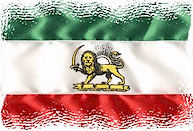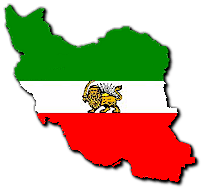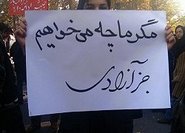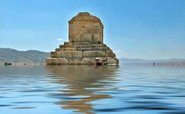Alliance For democracy In Iran
Please have a look at my other weblog, Iran Democracy - http://irandemocray.blogspot.com/
IMPERIAL EMBLEM

PERSIA
Shahanshah Aryameher
S U N OF P E R S I A
Iranian Freedom Fighters UNITE
Wednesday, November 07, 2007
Sizing up Iran's Military :www.Foreign Policy.com - May 1, 2006
Army
At 350,000 strong, the Iranian army is one of the largest in the neighborhood. But its size may not matter. More than half of the army is conscripts who are reported to be undisciplined, unmotivated, and poorly trained. In a war, many of them may be on foot as well. During the Iran-Iraq war of the 1980s, the majority of Iran’s armored vehicles were captured or destroyed. Nearly three decades of arms sale restrictions have kept Iran from acquiring the spare parts and equipment it needs to maintain even its diminished inventory.
The Navy
Iran is no naval power, but it does have enough capabilities to play the spoiler. In the event of war, Iran would likely try to jam up waterways by conducting unconventional operations, including deploying small attack boats to strike at shipping tankers. Nearly a quarter of the global oil supply is shipped through the Strait of Hormuz every day. But shipping lanes would grind to a halt if Iran put its seven mine warfare ships to work.In April, the Iranians tested what was reported to be the world’s fastest underwater missile, capable of eluding radar and traveling up to 233 miles per hour. Most experts scoffed at the announcement as little more than chest-thumping. More seriously, Iran’s navy has purchased three Russian Kilo-class submarines, whose quiet diesel engines could make them dangerous to Western warships. As with so much else about Iran’s military, however, there is a catch: The subs don’t seem to run well in the warm waters of the Persian Gulf.
Air Force
The Iranian Air Force has been in a tailspin since the shah fled his palace in 1979. International restrictions on arms purchases have made it nearly impossible for Iran to obtain spare parts for its planes, and experts suggest that fewer than half of the 300 aircraft in its inventory are airworthy. Tehran recently unveiled plans for a domestically produced fighter jet, but the first prototype won’t be completed before 2008—too late to play a role in the current crisis. It’s not just the planes that are in disrepair. The Islamic government purged U.S.-trained pilots after the revolution, and the Air Force has never recovered. It’s been more than 15 years since Iranian pilots have been able to participate in air-to-air combat simulations or other realistic training. Any combat over Iranian airspace would likely be quick and one-sided.Ballistic MissilesInformation about Iran’s missile force is often as imprecise as the missiles themselves. Tehran likely has between 250 and 300 Scud B missiles (180-mile range) and more than 60 Scud C missiles (310-mile range). It is currently testing an 800-mile range Shahab-3 missile based on North Korean technology, and developing the Shahab-4 with a potential range of 1,250 miles. In January 2006, Jane’s Defence Weekly reported that Iran had acquired intermediate-range ballistic missiles from North Korea. Those missiles can carry nuclear warheads and travel up to 1,550 miles—not far enough to hit Western Europe, but more than enough for Jerusalem. Ubi Rubin, former director of an Israeli missile defense organization, notes, “Iran has been careful not to develop capabilities that would threaten Europe.” Regional rivals—and any Western military forces in the area—are vulnerable, however.
Islamic Revolutionary Guard Corps
As the United States has discovered in Iraq, the regular military is not always the toughest opponent. Groups of diehards, like the Fedayeen in Iraq, can live on even after the main army has crumbled. Iran’s equivalent is the Islamic Revolutionary Guard Corps, also known as the Pasdaran.A paramilitary force independent of the regular military, it was formed by the clerical regime soon after the revolution. In essence, the military protects the country, and the Pasdaran protects the regime. It has some very prominent alums: President Mahmoud Ahmadinejad and more than 80 parliamentarians are former Pasdaran members. The group also has some unsavory international contacts. The Pasdaran is widely believed to train groups such as Lebanon’s Hezbollah and Palestinian Hamas and Islamic Jihad. Numbering around 120,000 men, the Pasdaran controls most of Iran’s missiles, fields its own navy and air force, and trains several special operations groups. According to John Pike, director of GlobalSecurity.org, the Pasdaran would likely resist an invasion fiercely, mainly through attacks on naval units and on commercial shipping. Bottom lineIt is hard to envision Iran’s ramshackle forces giving a modern Western force the “burning hell” Iran’s leaders have promised. Only Iranian ingenuity has kept the military from falling into complete disarray, according to Pike. “Their understanding of war is about a century behind America’s understanding of war,” he says. Given that reality, it is not surprising that Iran may want the ultimate defense: a nuclear weapon.
What could Iran do if pushed in conflict?
The U.S. military could unleash superior military force if it attacked Iran over its nuclear program but analysts say Washington may struggle to prevent Tehran from hitting back in Iraq and threatening oil supplies. Following are some tactics Iran could employ, including unconventional or so-called "asymmetric" methods that have either already been used by Iranian forces or blamed on Iran in the past:
HIT-AND-RUN RAIDS IN THE GULF
During Iran's 1980s war the two OPEC states sought to knock out each others oil exports, Iran's military mounted hit-and-run raids on oil tankers and other shipping in the Gulf. Experts say the Revolutionary Guards, the ideological wing of Iran's military, were a driving force in developing such tactics, often involving small speedboats mounted with a missile and which would stand a better chance of evading detection until the last minute. The Revolutionary Guards has already warned its "martyrdom-seeking" volunteers could cause havoc in the strategic Gulf waterway, if the need arose.
STRIKING U.S. INTERESTS
Supreme Leader Ayatollah Ali Khamenei has said Iran would strike U.S. interests in the region if pushed. Iran's military has declared that they have missiles that can sink "big warships" and others with a range to hit targets across the Gulf, which could include U.S. bases in Qatar and Bahrain, though military experts say U.S. anti-missile defenses could stop such rockets. Outside the Gulf, the United States has blamed Lebanon's Iranian-backed Hezbollah for the 1983 bombing of its marines barracks in Beirut that killed 241 soldiers. Iran's longest range missile, the Shahab 3, can reach Israel.
VIOLENCE IN IRAQ
The United States accuses Iran of backing militants in Iraq, although Tehran denies this. Some Western diplomats say Iran appears to have imposed at least some restrictions to prevent weapons flooding across the border into Iraq, in part because ultimately Iran wants a stable neighbor. But they say, if it came under pressure, Tehran could quickly make the border porous and add to problems for U.S. troops trying to quell violence. U.S. officials say Iran is using rogue elements in the Mehdi Army, led by firebrand cleric Moqtada al-Sadr, to weaken the Iraqi government and boost its influence. Iran has historical ties with Shi'ite Muslim groups in Iraq's government because some of their leaders were exiled in Iran, but analysts say it is unclear if Tehran now holds much sway over policy.
DESTABILISING AFGHANISTAN
Iran says it wants a stable neighbor to its east, Afghanistan, but Western officials say weapons have been crossing the border from Iran and found their way into the hands of the Taliban, though they say this may be partly because the area is already full of weapons held by well-equipped drugs smuggling gangs. Shi'ite Muslim Iran is vehemently opposed to the strict Sunni views of the Taliban and almost went to war with Afghanistan when the Taliban were in power in 1998. But analysts suggest Iran could assist its sworn enemy if that meant hurting the United States during any conflict.
HOSTAGE-TAKING
Iran was blamed by the West for helping mastermind some of the kidnappings of U.S. and other foreigners during the 1975-1990 civil war in Lebanon. The Iran-Contra Affair involved selling arms to Iran, at the time fighting Iraq, in return for Tehran's assistance in releasing hostages held by Lebanese groups. In an added twist, profits from the arms sales were used to fund anti-Communist rebels, the Contras, in Nicaragua. The dealings were exposed in 1986.
At 350,000 strong, the Iranian army is one of the largest in the neighborhood. But its size may not matter. More than half of the army is conscripts who are reported to be undisciplined, unmotivated, and poorly trained. In a war, many of them may be on foot as well. During the Iran-Iraq war of the 1980s, the majority of Iran’s armored vehicles were captured or destroyed. Nearly three decades of arms sale restrictions have kept Iran from acquiring the spare parts and equipment it needs to maintain even its diminished inventory.
The Navy
Iran is no naval power, but it does have enough capabilities to play the spoiler. In the event of war, Iran would likely try to jam up waterways by conducting unconventional operations, including deploying small attack boats to strike at shipping tankers. Nearly a quarter of the global oil supply is shipped through the Strait of Hormuz every day. But shipping lanes would grind to a halt if Iran put its seven mine warfare ships to work.In April, the Iranians tested what was reported to be the world’s fastest underwater missile, capable of eluding radar and traveling up to 233 miles per hour. Most experts scoffed at the announcement as little more than chest-thumping. More seriously, Iran’s navy has purchased three Russian Kilo-class submarines, whose quiet diesel engines could make them dangerous to Western warships. As with so much else about Iran’s military, however, there is a catch: The subs don’t seem to run well in the warm waters of the Persian Gulf.
Air Force
The Iranian Air Force has been in a tailspin since the shah fled his palace in 1979. International restrictions on arms purchases have made it nearly impossible for Iran to obtain spare parts for its planes, and experts suggest that fewer than half of the 300 aircraft in its inventory are airworthy. Tehran recently unveiled plans for a domestically produced fighter jet, but the first prototype won’t be completed before 2008—too late to play a role in the current crisis. It’s not just the planes that are in disrepair. The Islamic government purged U.S.-trained pilots after the revolution, and the Air Force has never recovered. It’s been more than 15 years since Iranian pilots have been able to participate in air-to-air combat simulations or other realistic training. Any combat over Iranian airspace would likely be quick and one-sided.Ballistic MissilesInformation about Iran’s missile force is often as imprecise as the missiles themselves. Tehran likely has between 250 and 300 Scud B missiles (180-mile range) and more than 60 Scud C missiles (310-mile range). It is currently testing an 800-mile range Shahab-3 missile based on North Korean technology, and developing the Shahab-4 with a potential range of 1,250 miles. In January 2006, Jane’s Defence Weekly reported that Iran had acquired intermediate-range ballistic missiles from North Korea. Those missiles can carry nuclear warheads and travel up to 1,550 miles—not far enough to hit Western Europe, but more than enough for Jerusalem. Ubi Rubin, former director of an Israeli missile defense organization, notes, “Iran has been careful not to develop capabilities that would threaten Europe.” Regional rivals—and any Western military forces in the area—are vulnerable, however.
Islamic Revolutionary Guard Corps
As the United States has discovered in Iraq, the regular military is not always the toughest opponent. Groups of diehards, like the Fedayeen in Iraq, can live on even after the main army has crumbled. Iran’s equivalent is the Islamic Revolutionary Guard Corps, also known as the Pasdaran.A paramilitary force independent of the regular military, it was formed by the clerical regime soon after the revolution. In essence, the military protects the country, and the Pasdaran protects the regime. It has some very prominent alums: President Mahmoud Ahmadinejad and more than 80 parliamentarians are former Pasdaran members. The group also has some unsavory international contacts. The Pasdaran is widely believed to train groups such as Lebanon’s Hezbollah and Palestinian Hamas and Islamic Jihad. Numbering around 120,000 men, the Pasdaran controls most of Iran’s missiles, fields its own navy and air force, and trains several special operations groups. According to John Pike, director of GlobalSecurity.org, the Pasdaran would likely resist an invasion fiercely, mainly through attacks on naval units and on commercial shipping. Bottom lineIt is hard to envision Iran’s ramshackle forces giving a modern Western force the “burning hell” Iran’s leaders have promised. Only Iranian ingenuity has kept the military from falling into complete disarray, according to Pike. “Their understanding of war is about a century behind America’s understanding of war,” he says. Given that reality, it is not surprising that Iran may want the ultimate defense: a nuclear weapon.
What could Iran do if pushed in conflict?
The U.S. military could unleash superior military force if it attacked Iran over its nuclear program but analysts say Washington may struggle to prevent Tehran from hitting back in Iraq and threatening oil supplies. Following are some tactics Iran could employ, including unconventional or so-called "asymmetric" methods that have either already been used by Iranian forces or blamed on Iran in the past:
HIT-AND-RUN RAIDS IN THE GULF
During Iran's 1980s war the two OPEC states sought to knock out each others oil exports, Iran's military mounted hit-and-run raids on oil tankers and other shipping in the Gulf. Experts say the Revolutionary Guards, the ideological wing of Iran's military, were a driving force in developing such tactics, often involving small speedboats mounted with a missile and which would stand a better chance of evading detection until the last minute. The Revolutionary Guards has already warned its "martyrdom-seeking" volunteers could cause havoc in the strategic Gulf waterway, if the need arose.
STRIKING U.S. INTERESTS
Supreme Leader Ayatollah Ali Khamenei has said Iran would strike U.S. interests in the region if pushed. Iran's military has declared that they have missiles that can sink "big warships" and others with a range to hit targets across the Gulf, which could include U.S. bases in Qatar and Bahrain, though military experts say U.S. anti-missile defenses could stop such rockets. Outside the Gulf, the United States has blamed Lebanon's Iranian-backed Hezbollah for the 1983 bombing of its marines barracks in Beirut that killed 241 soldiers. Iran's longest range missile, the Shahab 3, can reach Israel.
VIOLENCE IN IRAQ
The United States accuses Iran of backing militants in Iraq, although Tehran denies this. Some Western diplomats say Iran appears to have imposed at least some restrictions to prevent weapons flooding across the border into Iraq, in part because ultimately Iran wants a stable neighbor. But they say, if it came under pressure, Tehran could quickly make the border porous and add to problems for U.S. troops trying to quell violence. U.S. officials say Iran is using rogue elements in the Mehdi Army, led by firebrand cleric Moqtada al-Sadr, to weaken the Iraqi government and boost its influence. Iran has historical ties with Shi'ite Muslim groups in Iraq's government because some of their leaders were exiled in Iran, but analysts say it is unclear if Tehran now holds much sway over policy.
DESTABILISING AFGHANISTAN
Iran says it wants a stable neighbor to its east, Afghanistan, but Western officials say weapons have been crossing the border from Iran and found their way into the hands of the Taliban, though they say this may be partly because the area is already full of weapons held by well-equipped drugs smuggling gangs. Shi'ite Muslim Iran is vehemently opposed to the strict Sunni views of the Taliban and almost went to war with Afghanistan when the Taliban were in power in 1998. But analysts suggest Iran could assist its sworn enemy if that meant hurting the United States during any conflict.
HOSTAGE-TAKING
Iran was blamed by the West for helping mastermind some of the kidnappings of U.S. and other foreigners during the 1975-1990 civil war in Lebanon. The Iran-Contra Affair involved selling arms to Iran, at the time fighting Iraq, in return for Tehran's assistance in releasing hostages held by Lebanese groups. In an added twist, profits from the arms sales were used to fund anti-Communist rebels, the Contras, in Nicaragua. The dealings were exposed in 1986.
Subscribe to:
Post Comments (Atom)
























 اخبار مربوط به زندانیان سیاسی و نقض حقوق بشر
اخبار مربوط به زندانیان سیاسی و نقض حقوق بشر

















 Tulips in Holland
Tulips in Holland












No comments:
Post a Comment